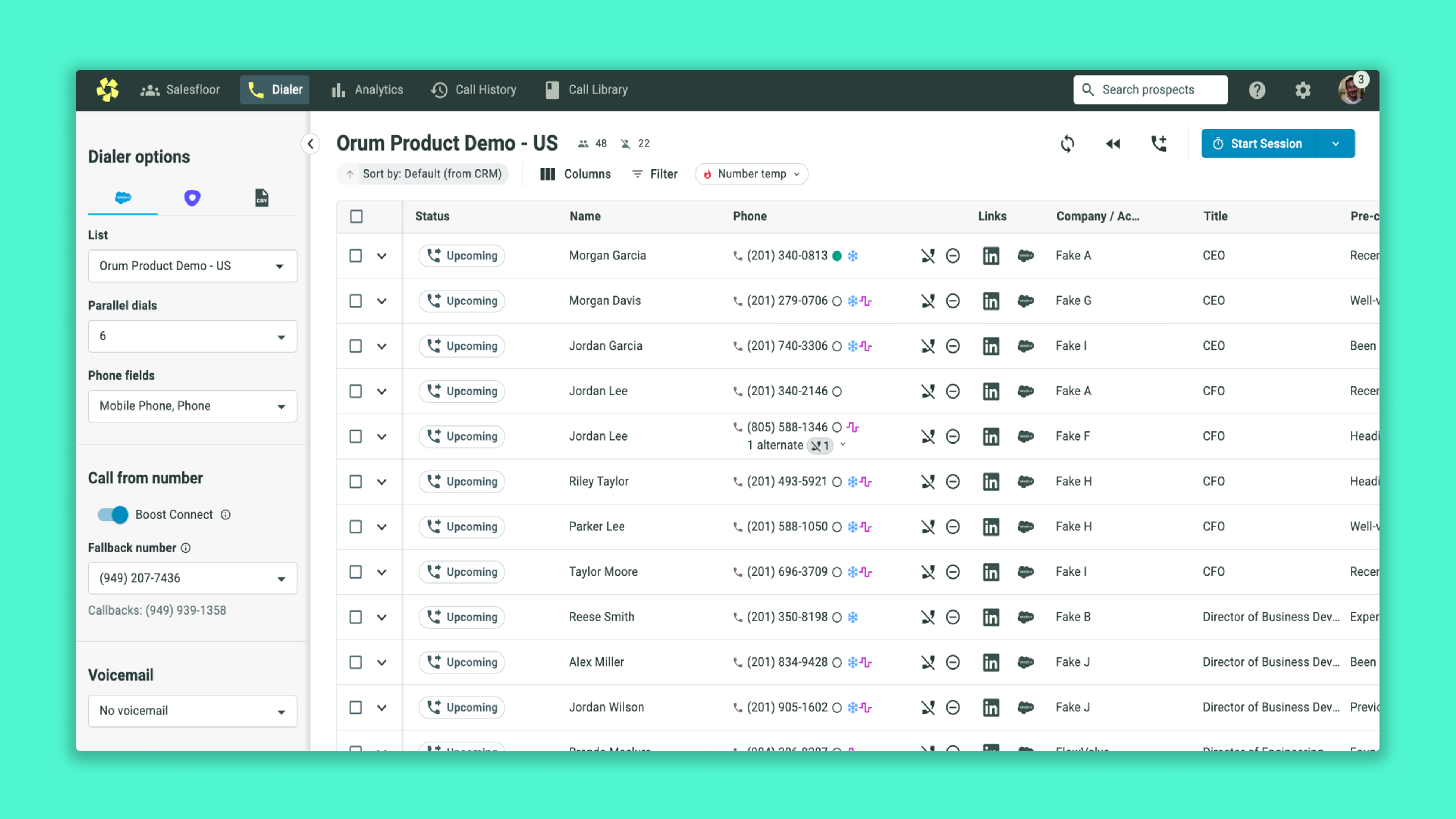How to build pipeline that closes


Not all pipeline is created equal. If your frontline reps constantly hit their booked meeting numbers, but those meetings never result in closed-won, they’re nothing more than vanity numbers.
SDRs must understand what makes up prospective customers who ultimately sign contracts. It becomes hard to justify headcount budget if your SDRs are hitting numbers but your bottom line isn’t growing.
To maximize impact, reps must focus on creating pipeline opportunities that are highly likely to close rather than just booking meetings for the sake of activity.
Here’s how to ensure your outbound efforts on the phone translate into closed business.
Step 1: Define Your Ideal Customer Profile (ICP)
Start with understanding who you are most successful at closing. As Colin Specter explains, “Once you have some data on who you have success closing and who you have success retaining and growing as a customer, it’s critically important to start looking for patterns.” Analyze your existing customer base to identify key attributes that lead to success.
Key Factors to Consider:
- Industry: Which sectors do you win most consistently in?
- Company Size: Are you more successful with small, medium, or large enterprises?
- Pain Points: What problems do you solve most effectively? Colin emphasizes, “You want to understand what makes an account close in a timely manner so that you can forecast accurately for your business.”
- Decision-Makers: Who within the organization has the authority to make decisions?
Colin notes, “Once you’ve identified these patterns, use them to develop a solid qualification framework that ensures your pipeline is filled with genuine opportunities, not just placeholders.”
Step 2: Use a Qualification Framework
Establish clear qualification criteria to avoid time-wasting meetings. Colin highlights, “You don’t want to book meetings for meetings' sake. You need to have qualification criteria that will lead to bonafide pipeline, like real pipeline, real opportunities.” One popular framework is BANT (Budget, Authority, Need, Timeline), though your organization may use alternatives like MEDDIC.
Simplified Qualification Process:
- Authority: “Am I talking to the right person within the business?” Colin says. “This person should be a potential change agent, a champion, or someone who can lead you to the right connection. If they’re not, then it’s not a valuable conversation.”
- Need: “Is there a clear pain point we can solve?” Colin continues. “They need a defined problem that aligns with our offering.”
- Timeline: “It’s not just about when they want to buy from you but understanding the urgency behind solving their business challenge,” Colin explains. “For instance, if your sales cycle is three months, then talking to someone with a need six months out may not qualify as immediate pipeline.”
Step 3: Align SDR and AE Efforts
The relationship between Sales Development Representatives (SDRs) and Account Executives (AEs) is crucial for creating pipeline that converts. Colin emphasizes, “It’s critical that SDRs get direct feedback from AEs. I love when SDRs join the meeting they set up or listen to the call recording afterward.”
Best Practices for SDR-AE Collaboration:
- Shadow Meetings: “If the meeting is not marked qualified or is marked as disqualified, it’s vital that SDRs understand why,” Colin says. “It’s about learning and iterating.”
- Feedback Loops: AEs or managers should regularly provide insights on why meetings were or were not qualified. “It helps SDRs understand what a strong opportunity sounds like and how they can improve their approach,” Colin adds.
- Training: “During training, show real examples of qualified calls. Let SDRs hear what success sounds like so they can start identifying those patterns,” he suggests.
Step 4: Ask Thoughtful Qualification Questions
During calls, SDRs must be equipped to ask questions that uncover genuine interest and urgency. “It’s about asking questions that get to the heart of the issue,” Colin advises. “If you’re not asking the right questions, you’re just spinning your wheels.”
Sample Questions:
- Authority: “Are you the person who oversees [relevant department or initiative]?” Colin elaborates, “You need to ensure the person has the authority or influence to move the conversation forward, even if they’re not the ultimate decision-maker.”
- Need: “How are you currently handling [specific challenge], and are you satisfied with the results?” Colin adds, “Understanding their pain can help you position your solution as indispensable.”
- Timeline: “Is this something you’re looking to address this quarter, or do you have a different timeline in mind?” Colin clarifies, “The answer gives you insight into how you should prioritize and follow up.”
Step 5: Optimize Account Targeting
Effective pipeline building begins with smart targeting. Colin explains, “The more the company can guide the SDR on the accounts we want them to focus on and the people we want them to book with, it reduces a lot of the risk.” He emphasizes that targeting should be strategic and data-driven.
Tips for Effective Targeting:
- Score Accounts: Use a scoring system to prioritize leads most likely to close. “It’s about reducing the margin for error,” Colin says. “When you guide SDRs on high-probability targets, you’re setting them up for success.”
- Leverage Data: “If your SDRs have to find accounts and people on their own, you must enable them with a strong understanding of what good looks like,” Colin advises. “Give them the tools and insights they need.”
- Enablement: Equip SDRs with the tools and knowledge to identify high-value targets. “You don’t want them guessing. The more prescriptive you can be, the better,” Colin concludes.
Building a pipeline that closes is about strategic targeting, consistent qualification, and strong SDR-AE alignment. As Colin Specter puts it, “It’s about understanding who becomes a qualified champion for us and enabling SDRs to know what good looks like.”
By refining your approach and focusing on quality over quantity, you’ll create a pipeline that drives real results and accelerates growth.





